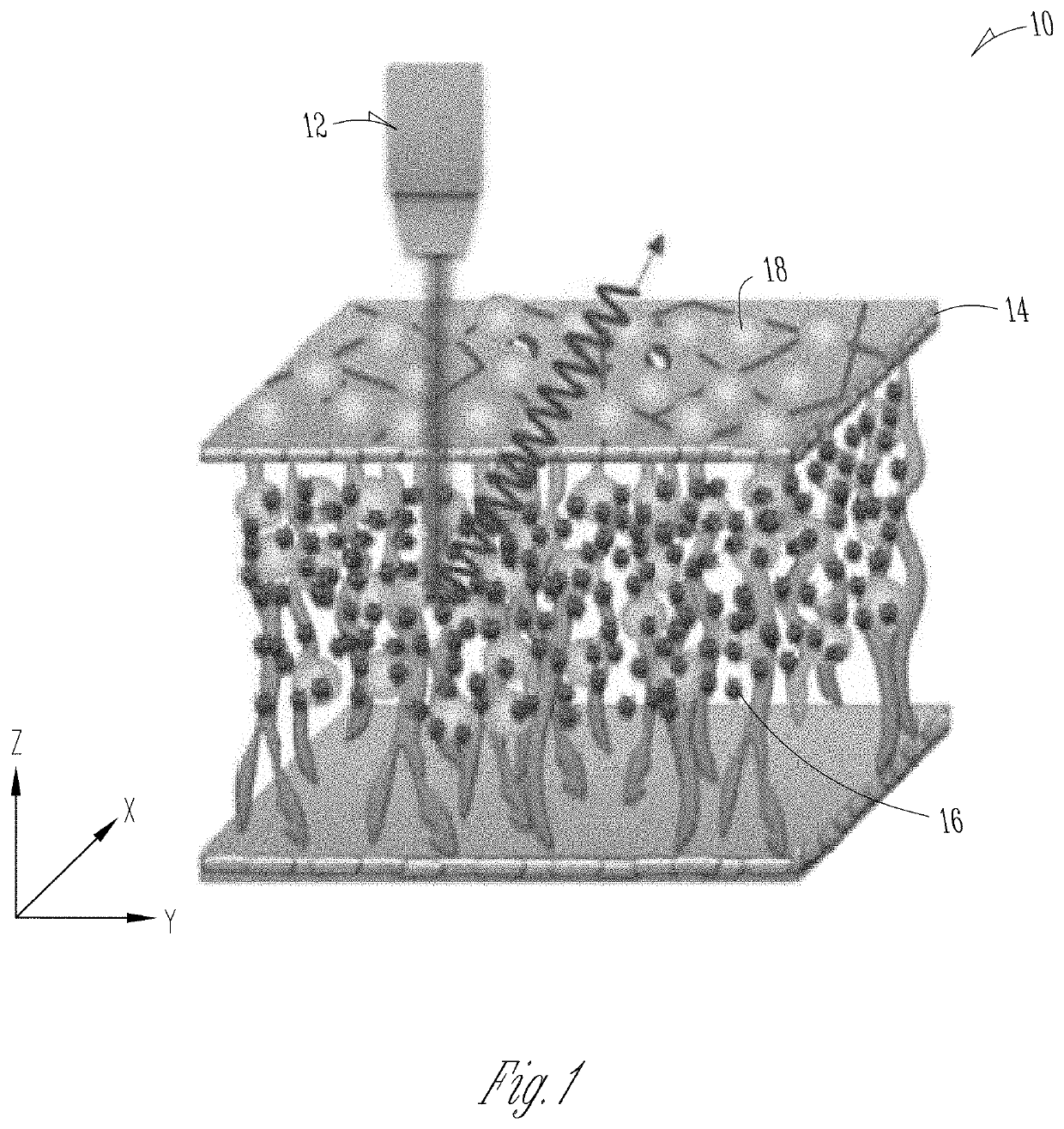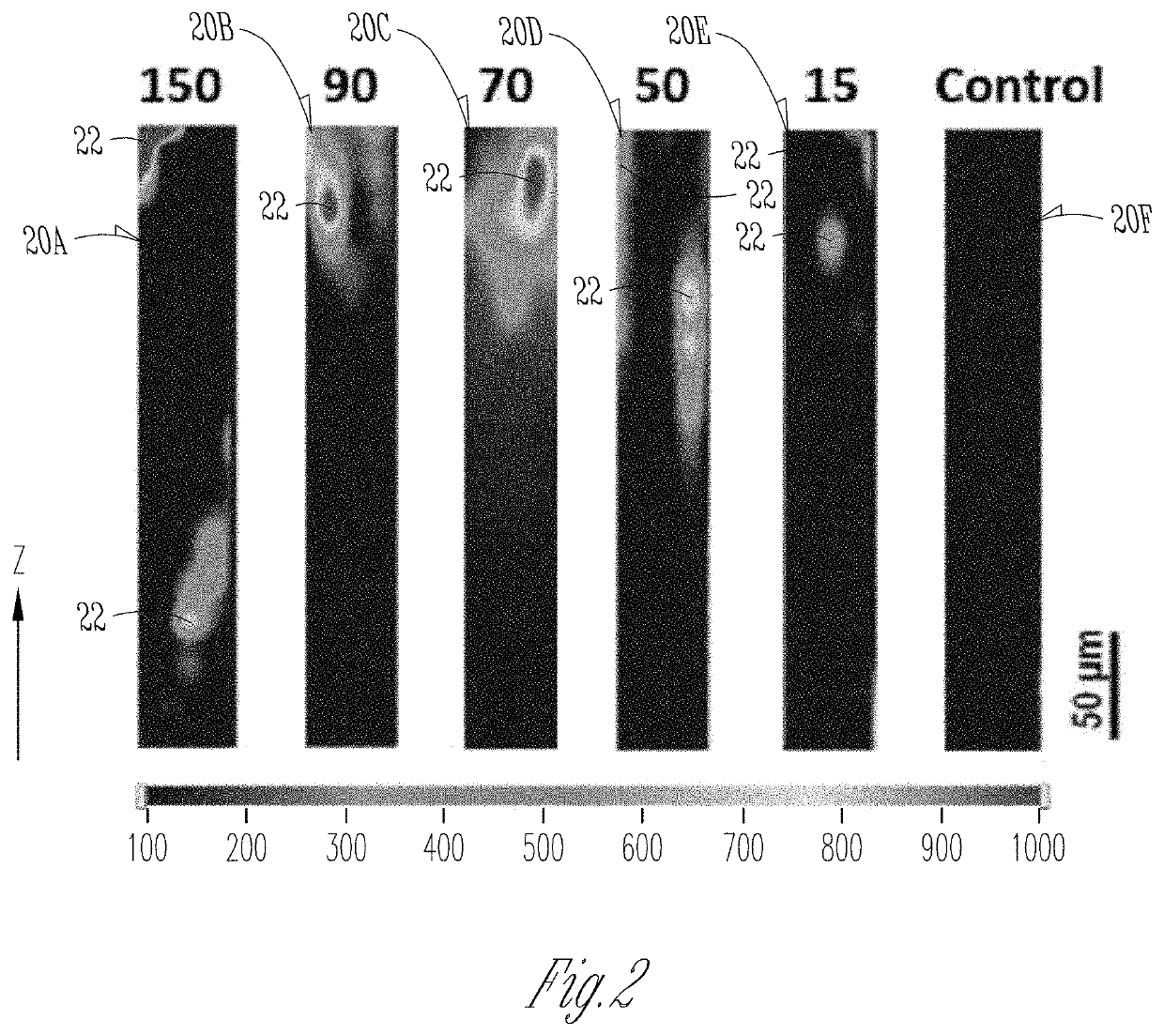Method and system of pesticide detection using SERS
a pesticide and detection method technology, applied in the field of pesticide detection methods and systems, to achieve the effects of determining the safety of eating an edible product including analyte, determining the effectiveness, and determining the stability of analyte over tim
- Summary
- Abstract
- Description
- Claims
- Application Information
AI Technical Summary
Benefits of technology
Problems solved by technology
Method used
Image
Examples
example 1
[0041]Further details of this Example can be found in the article “Real-time and in situ monitoring of pesticide penetration in edible leaves by surface-enhanced Raman scattering mapping”, Anal. Chem. 2016, 88, 5243-5250, the contents of which, including supporting information is hereby incorporated by reference.
[0042]Iron(III) dimethyldithiocarbamate (fungicide ferbam) and 2-(4-Thiazolyl) benzimidazole (fungicide thiabendazole) were of analytical reagent grade and were purchased from Sigma-Aldrich (St. Louis, Mo.). Sodium bicarbonate (NaHCO3) was purchased from Fisher Scientific (Pittsburgh, Pa.). Citrate-capped AuNPs colloids were purchased from NANO PARTZ™ Inc. (Loveland Colo., USA). Organic baby spinach leaves were obtained from Whole Foods Market (Waltham, Mass.). All reagents were used without further purification. Ultrapure water (18.2 MΩ·cm) was produced with Thermo Scientific Barnstead Smart2Pure Water Purification System and used for the preparation of all solutions.
[0043]...
example 2
[0056]Further details of this Example are found in “Evaluation of the penetration of multiple classes of pesticides in fresh produce using surface-enhanced Raman scattering mapping”, Journal of Food Science, Col 81, Nr. 11, 2016, the contents of which, including supplemental materials are hereby incorporated by reference. Thiabendazole (fungicide: 2-(4-thiazolyl)-1H-benzimidazole, ≥99%), acetamiprid (insecticide: (E)-N-[(6-chloro-3-pyridyl)methyl]-N′-cyano-N-methylethanimidamide, analytical grade), ferbam (fungicide: Iron(III) dimethyldithiocarbamate, analytical grade) and phosmet (insecticide: O,O-dimethyl S-Phthalimido Methyl Phosphorodithioate, analytical grade) were purchased from Sigma-Aldrich (St. Louis, Mo., USA). Sodium bicarbonate (NaHCO3) and glacial acetic acid was purchased from Fisher Scientific (Pittsburgh, Pa., USA). Citrate-capped AuNPs colloids (50 nm) were purchased from NANO PARTZ™ Inc. (Loveland, Colo., USA). Organic baby spinach leaves were obtained from Whole F...
example 3
[0073]Further details of this Example can be found in “Investigation of Pesticide Penetration and Persistence on Harvested and Live Basil Leaves using Surface-Enhanced Raman Scattering Mapping”, J. Agric. Food Chem. 2017, 65, 3541-3550, the contents of which, including supplemental materials referred to therein are hereby incorporated by reference. Thiabendazole (systemic fungicide: 2-(4-thiazolyl)-1H-benzimidazole, ≥99%, analytical grade) and ferbam (non-systemic fungicide: Iron(III) dimethyl dithiocarbamate, analytical grade) were purchased from Sigma-Aldrich (St. Louis, Mo., USA). Citrate-capped AuNPs colloids (50 nm) were purchased from NANO PARTZ™ Inc. (Loveland, Colo., USA). Au-coated glass slides were purchased from Fisher Scientific (Pittsburgh, Pa.). USDA organic basil plants were purchased from Stop & Shop Supermarket (Hadley, Mass., USA). All reagents were used without further purification. Ultrapure water (18.2 MΩ·cm) was produced using a Thermo Scientific Barnstead Smar...
PUM
| Property | Measurement | Unit |
|---|---|---|
| distance | aaaaa | aaaaa |
| particle size | aaaaa | aaaaa |
| particle size | aaaaa | aaaaa |
Abstract
Description
Claims
Application Information
 Login to View More
Login to View More - R&D
- Intellectual Property
- Life Sciences
- Materials
- Tech Scout
- Unparalleled Data Quality
- Higher Quality Content
- 60% Fewer Hallucinations
Browse by: Latest US Patents, China's latest patents, Technical Efficacy Thesaurus, Application Domain, Technology Topic, Popular Technical Reports.
© 2025 PatSnap. All rights reserved.Legal|Privacy policy|Modern Slavery Act Transparency Statement|Sitemap|About US| Contact US: help@patsnap.com



